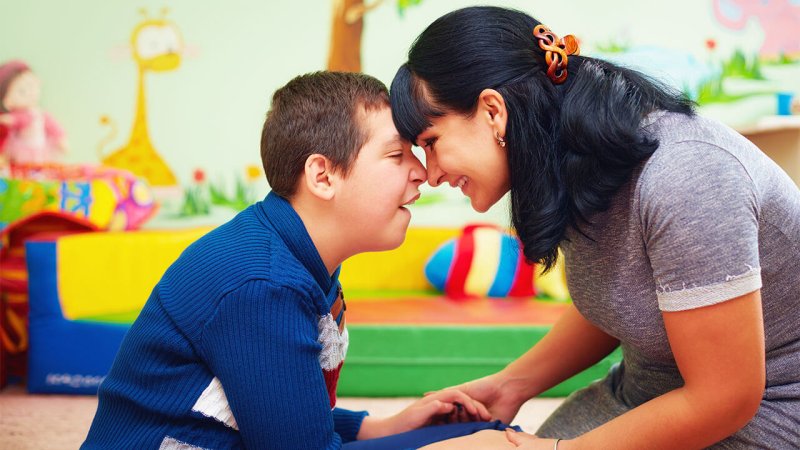“Many of the greatest artists, actors, musicians, scientists, and entrepreneurs of all time were and are autistic. We all serve a purpose in this world just like everyone else.” —Caitlyn Higgins, autistic university student, 22, Australia.
Autism researchers, experts and advocacy organizations have caught on to the fact that a growing number of autistic individuals are not interested in a cure. Even the large and controversial organization, Autism Speaks, removed “cure” from its mission statement in 2016. This hasn’t stopped some healthcare practitioners and parents of autistic children from continuing to treat autism as an illness that should be eliminated.[Editor’s note: Some names have been changed to protect the privacy of individuals.]
Marcia Hinds recently re-released her 2014 book, I Know You’re in There: Winning Our War Against Autism, in which she documents how her son, Ryan, was “cured” of autism. While this book and other materials like it are generally ignored by autistic individuals and autism advocates, the authors typically have a loyal following of readers and fans — most of whom are non-autistic parents of autistic children.
Applied behavior analysis
While it’s unknown what proportion of parents of autistic children want their children to “recover” or be “cured” of autism, many parents do seek treatment for their kids — often in the form of applied behavior analysis (ABA). ABA therapy has come under fire for putting too much emphasis on making the child appear as normal as possible through methods that are invasive (e.g., constantly touching the child), aversive (e.g., using electric shocks or disgusting smells or foods as punishments), or overly focused on passive compliance.

Though some ABA proponents believe the treatment can lead to reduced suffering and ultimately “recovery” from autism, opponents say that ABA is unethical and only teaches the child how to mask or hide their autistic traits. ABA, they say, turns autistic children into chronic people pleasers since the children have learned that pleasing others is the only way to receive acceptance and avoid negative consequences.
“I realized that I had to hide the real me away, because being different was dangerous, not fitting in drew negative attention to myself. Being me was BAD,” Keiran Rose, an autistic adult, wrote in an article for AutismAwareness.com. Whether it’s through ABA or learning in school or at home that autistic characteristics are not acceptable, autistic children learn to hate who they are. This, he says, is the reason why so many autistic adults die by suicide.
Proponents of ABA and even some individuals on the spectrum, however, say that the therapy has changed a lot over the years, becoming less focused on conformity and instead teaching skills and allowing the child to lead learning activities. John Elder Robison, autistic author of Look Me in the Eye, thinks that ABA should not focus on conformity or appearing normal, but should only teach skills (such as organizational techniques), help with communication and language development, and aid in learning how to handle specific social situations.
Aside from ABA, as many as 75% of autistic children receive alternative, unproven treatments aimed at reducing or eliminating certain behaviors and symptoms attributed — sometimes erroneously — to the child’s autism. These treatments can be harmful or even fatal, as in the case of a five-year-old autistic boy in Pennsylvania who died after receiving intravenous chelation therapy. Other common alternative interventions include bleach drinks and enemas, none of which are supported by research or the mainstream medical community.
The deficit model of autism underlies push for a cure
“When I was diagnosed as autistic, I had a lot of internalized prejudices about autism that I was not aware of. I went to my GP originally to get medication to stop my anxiety. And then when I went to the psychiatrist, the goal was always to be ‘cured’ of my anxiety so I could be ‘normal’. When it came up that my psychiatrist thought I was autistic, I was very resistant to the idea because now I couldn’t be ‘cured’ and would never be ‘normal’.” —Khiah S., autistic ESL teacher and master’s student, 25, Scotland; in an online interview with GLP
Though some experts see signs of hope and transformation in how we understand autism (not as a disease, but as a genetic neurological difference with certain evolutionary advantages), society’s prevailing position continues to be that autism is something to be manipulated, fixed or changed. Autistic behaviors and traits are still largely spoken of as unwanted and undesirable, and parents with a recently diagnosed autistic child are expected to go through a long period of mourning.

“When most people think of autism they think of violent, unreachable people in worlds completely of their own making… Having autism is the worst fate parents can imagine befalling their children and they dread its impact on their families,” wrote Dawn Prince-Hughes, an autistic mother and primatologist.
What underlies this negative, pathologizing concept of autism?
Prince-Hughes’ words depict the essence of the deficit model of autism. Seen in this light, with a focus on autism’s disadvantages, weaknesses, differences, and limitations, the hope for a cure makes sense.
But when the focus is turned to the benefits, strengths and possibilities, autism becomes not a disability but simply a garden variety human difference — a part of natural human variation.
“I feel that my way of being is only a disability of context, that what have been labeled ‘symptoms of autism’ in the context of my culture are inherited gifts of insight and action,” Prince-Hughes continued.
Probably the best view — the most beneficial view for autistic individuals and those who love them and advocate for them — is a balanced one: recognizing the very real challenges and health concerns that come along with autism, while also focusing on the strengths that autism offers the individual, the family, the community and the world.
This article was previously published on May 21, 2020 on the Genetic Literacy Project.
Kristen Hovet covers genetics, medical innovations and the intersection of sociology and culture. The North Dakota native is based in Vancouver, Canada, where she is working on a master’s degree in health communication at Washington State University. Follow her on her website or Twitter @kristenhovet































